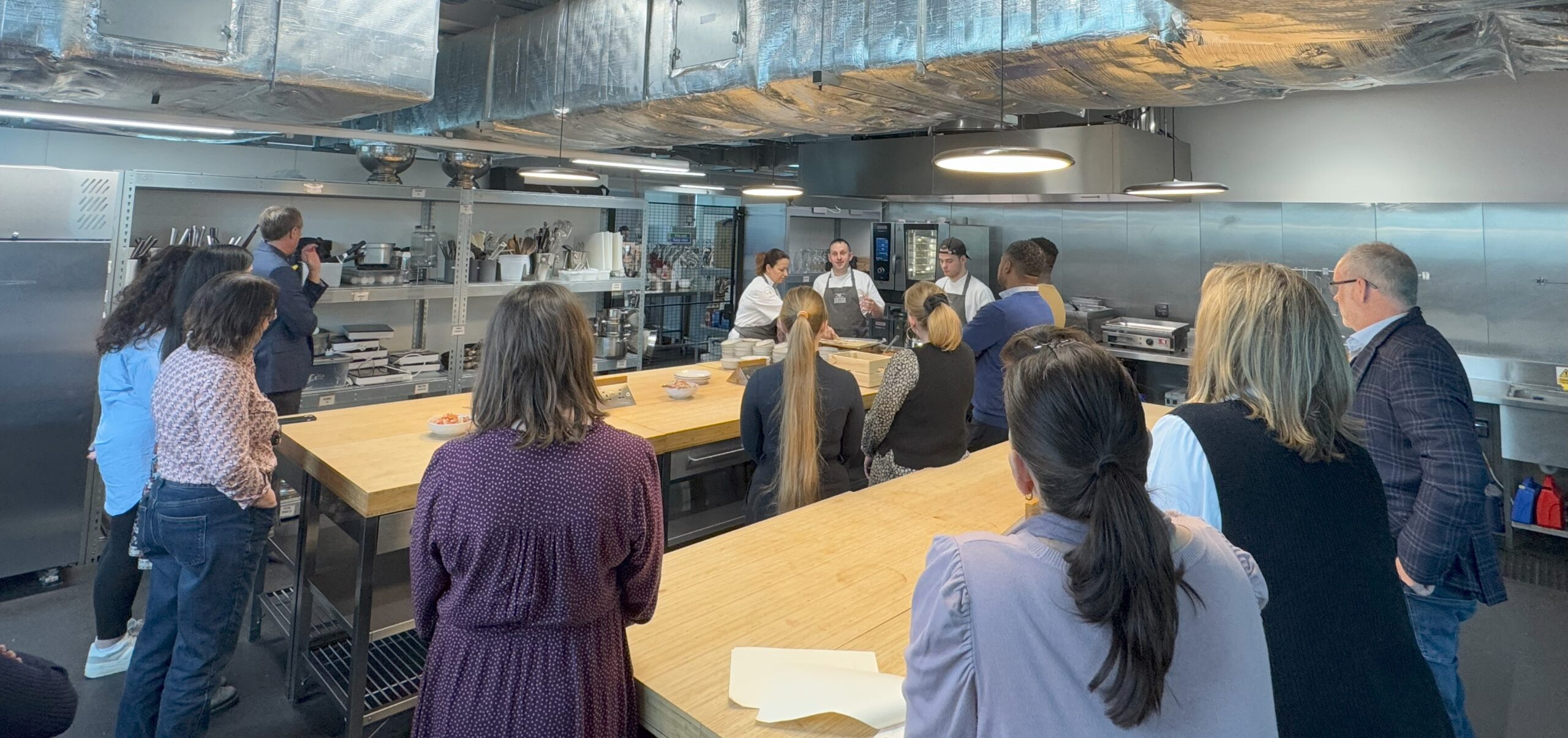Recently, Nutritics, in collaboration with Zero Carbon Forum, hosted an inspiring Sustainable Menu Day event. The day brought together ESG experts, development chefs and operators from across the hospitality industry to spark conversations around one important question: How can we make hospitality menus more sustainable?
As the environmental impact of food continues to come into sharper focus, the role of hospitality businesses in shaping more sustainable choices is no longer optional. But while we learned from presentations from Bob Gordan, and Dr Laura Kirwan that the science is clear, the path forward is more complex. Changing menus involves not just reformulating recipes but also shifting perceptions, retraining staff, rethinking sourcing and navigating customer expectations.
SUSTAINABLE MENUS THAT DON’T COMPROMISE ON TASTE
A standout moment of the day came during a tasting session led by the talented chefs at Shepherd Neame., Attendees were served two versions of a classic pub favourite – chicken curry. The first followed a traditional recipe. The second had been reformulated to lower its environmental impact – making changes like reducing the meat content and replacing double cream with coconut milk.
The changes improved the dish’s carbon score from a ‘D’ to a ‘C’, while also delivering nutritional benefits that made it a healthier option overall. Despite initial assumptions that the lower-carbon version might feel like a compromise, the response in the room told a different story – most attendees agreed it actually tasted better. Rich, balanced, and every bit as satisfying.
“If you’d served me the lower-carbon curry in the pub, I’d have had no idea it was the ‘sustainable’ version — it just tasted great.”
The tasting was a clear example of what sustainable innovation can look like on the plate. It demonstrated how ingredient swaps, when made thoughtfully, can enhance the eating experience. For chefs and operators hesitant about the trade-offs of menu reformulation, everyone in the room agreed – you don’t have to sacrifice flavour to do better for the planet.
THE POWER OF SHARED EXPERIENCE
During the open discussion, attendees shared their own experiences – the good, the challenging and the uncertain. Some had already started introducing carbon labels on menus or trying to cut down on high-impact ingredients. While others shared concerns about pushback and navigating internal buy-in.
“We’re starting to see sustainability not as a constraint, but as a creative challenge.”
While everyone acknowledged making these changes isn’t always easy, there are simple ways to start making small changes for a big impact, such as:
- Don’t advertise it: Not every change needs to be highlighted. In their business they’ve made small changes like serving a delicious vegan ice cream alternative that’s always well received by customers. Whereas if it was advertised there would probably be pushback with the pre-conceived connotations associated with vegan alternatives.
- Give customers the choice: Using ‘add-ons’ as a way of reducing the amount of meat served. Presenting menu options like a caesar salad with the choice of adding on chicken, prawns or tofu presents customers with the choice of choosing a lower carbon impact meal.
- Think about portion sizes: Offering portion sizes can be a clever way to reduce carbon impact without even trying. Some customers just want a light bite as opposed to a large meal and with portion sizes not only are you offering them more choices but the opportunity to reduce food waste with unwanted food.
“What’s been most valuable today is just hearing what others are actually doing — the honest wins and the setbacks.”
WHAT HAPPENS NEXT?
The Sustainable Menu Day wasn’t about having all the answers – it was about starting the right conversations. And those conversations need to continue. What’s clear is that reformulating a menu isn’t just a technical change – it’s a cultural one that requires buy-in from customers, employees and chefs. It requires new narratives around food, more training and support from leadership. It also means helping customers to grasp that ‘sustainable’ can mean more flavour.
However, there is still opportunity for small steps to be made on the road to sustainable menus. The tools are there and it’s about collaboration to take even bigger steps.
